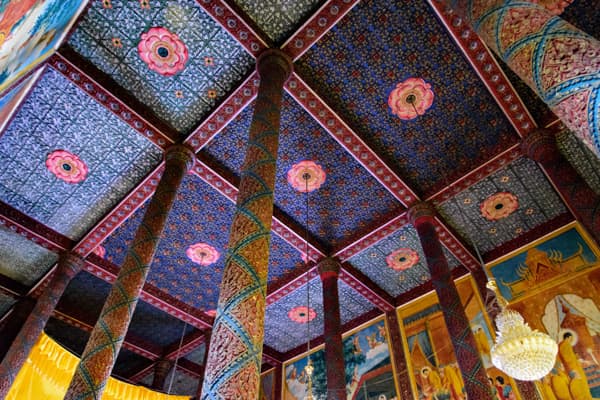Nikon D5500: At a glance
- 24.2-million-pixel, CMOS sensor
- Single-lens reflex viewfinder
- ISO 100-25,600
- 3.2in, 1.037k-million-dot, vari-angle touchscreen
- 1,920×1,080p HD video mode
- 470g (with battery and memory card)
- 124x97x70mm
- Price: Around £450 (used, body only), £570 (with 18-55mm II kit lens)

Towards the end of last year I found myself in a situation that will be no doubt be familiar to many photographers, namely deciding on whether to stick with a familiar camera system or opt for something different entirely. I was preparing for a short trip around Southeast Asia and I was open to exploring something new to serve as my main travel camera, having previously let go of my ageing Nikon D5100, and later a faulty D5300.
Given that it managed to satisfy the same criteria that meant I chose its forebears, the Nikon D5500 was the obvious answer. The combination of it being small and light enough for travel, with a capable sensor and core feature set, yet affordable enough to mean I could use it in a range of places without too much worry, meant that it was high up on my shortlist. Yet, the wealth of then-current and recently discontinued alternatives was making me reconsider.
Perhaps a mirrorless body with a couple of lenses would be a better idea? Or even a high-quality compact? The standard of compacts has certainly improved enough over the last few years to make these more viable. In the end, a chance visit to a local retailer suddenly made my decision easier. The retailer was selling an ex-display Nikon D5500 for almost half its usual price. This was partly down to it coming with no box, straps, manuals or even a charger, but even without these it was a steal (particularly as it had managed retain a mint condition). Furthermore, with my existing Nikon lenses and compatible accessories I would need nothing more, save for a charger, which I picked up cheaply online.
The D5500 was announced at the start of 2015, and was notable for being the first Nikon DSLR to be equipped with a touchscreen. At the time of its release it was positioned above the most junior D3300 but beneath the D7100, and was designed along very similar lines to the previous D5300. It offers a 24.2MP DX-format sensor (without an anti-aliasing filter), together with a 3.2in vari-angle display, an Expeed 4 processor, 39-point AF system and a respectable 5fps burst shooting option.
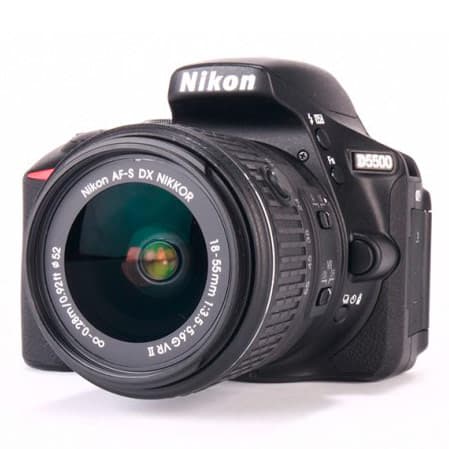
Nikon had managed to construct it with a smaller and lighter body than the D5300, and, no doubt partly due to the addition of an eye sensor next to the viewfinder, was able to give it a much stronger battery life too, at around 820 frames per charge – a great advantage for travelling. Less of an advantage here was the decision to drop the GPS unit from the D5300, although this wasn’t something I imagined I would use. In any case, this would still be possible were I to keep the camera partnered with my smartphone through its Wi-Fi system, or alternatively via an external GPS dongle.
Elsewhere, the camera offers pretty much everything one might expect from such a model, including a sensitivity range that ventures up to ISO 25,600, 14bit Raw file recording and an interval timer for the creation of time-lapse footage. The model isn’t quite advanced enough to gain the 4K video recording option that’s started to make an appearance elsewhere in the Nikon lineup, but the Full HD alternative does at least shoot at a range of resolutions and frame rates up to 60p, and there’s even a microphone port for those keen to improve the quality of audio recording.
Together with my AF-S DX Nikkor 16-85mm f/3.5-5.6G ED VR and AF-S Nikkor 50mm f/1.8G lenses, the setup provided me with an effective focal range of 24-128mm and 75mm respectively. I imagine many photographers would consider this range to be too limiting for travel, but having already used these optics for a longer trip a few years previously, I was familiar and comfortable with what this combination would allow.
My planned route would see me arrive in Bangkok before I ventured east through Cambodia, first seeing the famous Angkor Wat complex and the capital Phnom Penh before spending some time down on the coast. I would then cross the border into Vietnam, travelling to Ho Chi Minh City before heading north to Hoi An. Finally, I would spend some time trekking around the Sa Pa region, before my last stop in Vietnam’s capital, Hanoi.
Nikon D5500: Handling and customisation
The first time I handled the Nikon D5500, I was struck by how different it felt in my hands from previous models. While a handful of small, largely cosmetic changes to buttons and other controls are clear on sight, once you have it in your hands you marvel at just how compact and lightweight Nikon has managed to make it while retaining the DSLR form.
Nikon claims that a revised internal structure has allowed the camera to be slimmer than was previously possible, and this has allowed for the grip to be deceptively deep. It’s somewhat unusual on such a small body to be able to get as much of your hand around it as you can here, and I found it provided excellent support for my AF-S DX Nikkor 16-85mm f/3.5-5.6G ED VR at full extension. I imagine that those with slightly larger hands may be put off by the small buttons, however, and potentially even further by their shallowness when pressed.
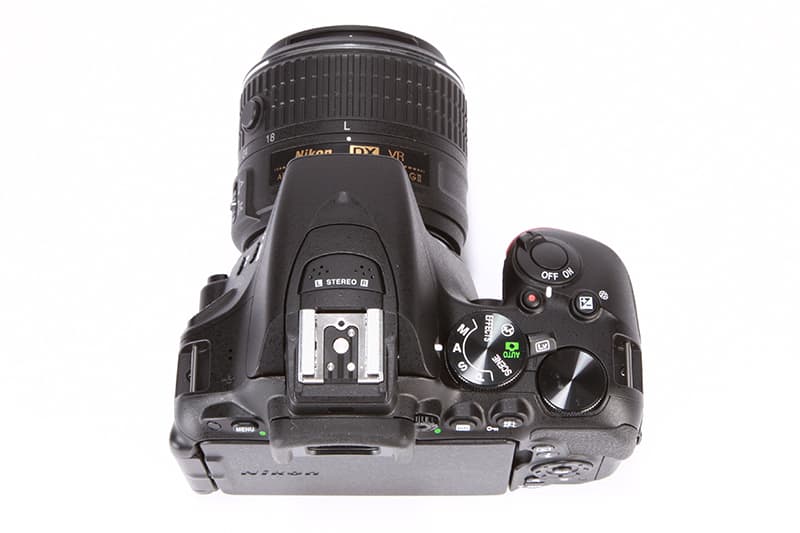
With no dedicated ISO control, I followed the customisation I had set for my previous Nikon cameras by assigning this option to the Fn button on the front plate. It’s also possible to create your own My Menu tab with all of your most commonly accessed options, but on a camera like the D5500 I feel this feature is largely redundant. After all, with only six menu tabs in total, together with easy access to key options through the ‘i’ button and the further advantage of touchscreen operation, I couldn’t think of anything that would take that long to access to warrant it needing to be filtered into a separate menu.
I did, however, take advantage of the ability to create custom Picture Controls. I’d become accustomed to shooting everything on the default presets and applying my own profiles in post-processing, but when I appreciated the extent to which you could adjust many parameters in camera, I figured it would make sense to create a few here too.
In addition to the usual sharpening, contrast, brightness and saturation options, the D5500 Picture Control 2.0 system offers sliders for clarity and hue, and surprisingly fine control over all of these. You can name any custom presets however you like and they are also available as part of the camera’s Raw-processing options.
I created four extra Picture Controls in total. One was a vivid, but all-purpose, colour treatment, and another much the same but with more contrast, primarily to give deeper blacks. The other two were monochromatic options, one black-and-white and the other with a sepia tone, each having contrast heightened and clarity boosted for extra definition.

For more colourful scenes, I created a Picture Control with vivid colours and extra clarity and contrast, giving images like this a little extra punch straight from the camera.
One thing I really appreciated about my previous Nikon bodies was the extent of what was possible after capture, and I made great use of the various options here. The camera’s Raw-processing feature is particularly well implemented. Not only can you see preview the various changes before committing to them – surprisingly, not something every camera allows – but you can also zoom to have the preview fill the display’s full dimensions as you do so, and tweak any pre-defined or custom Picture Controls.
Together with further settings for correcting converging verticals, curvilinear distortion and skewed horizons, as well as the options to crop images and quickly resize them, it’s a mystery as to why other manufacturers aren’t as generous here when Nikon is happy to offer all this and more on a camera at the lower end of its DSLR lineup.
The D5500’s various post-processing options meant that I could quickly polish images destined for online use while I was still travelling, and for this I relied upon the camera’s Wi-Fi functionality. This is one area where different cameras are particularly unequal, with some burdened by overly complex connectivity and others let down by basic or poorly-thought-out apps. Nikon itself is no stranger to this, with its SnapBridge system having irked many users since its release.

The camera’s powerful Picture Control 2.0 system and in-camera Raw processing function provide you with ample scope for getting images right in camera
Thankfully, the D5500 is designed with a fairly basic Wi-Fi option, and at least for the purpose of sending images across to smartphones and tablets, it’s about as straightforward as it can be. Once you’ve enabled Wi-Fi on your camera and downloaded Nikon’s Wireless Mobile Utility app, all you do is find the camera’s Wi-Fi network on your phone and open the app. From here, you can easily browse and download what’s on your card. I found this worked without issue and promptly too, and you can even assign the Wi-Fi option to the camera’s Fn button to make the connection easier to instigate.
The app’s simplicity, however, is also its weakness. If you want to control the camera remotely from the smart device, you don’t really have any option other than to fire the shutter. You can view current exposure settings, but nothing can actually be changed from the device itself. I had no reason to use this while I was travelling, but this may bother those who do have uses for it.
Nikon D5500: In focus
The vast majority of my images were of either static subjects or people just going about their business, and I found the camera’s focusing system to be perfectly capable for such everyday scenes. Having such favourable weather conditions in most of the areas I visited helped here, but even when I had to disable the AF-assist illuminator for discretion indoors, the camera did well to identify and lock onto key subjects.
There were a few occasions where I switched the focusing system to track moving subjects, hoping the camera would be able to keep up. A model of the D5500’s billing isn’t intended for action in the same way a D7200 might be, although with 39 AF points saturated in the centre of the frame and a 5fps burst shooting option, it’s not ill-equipped either.
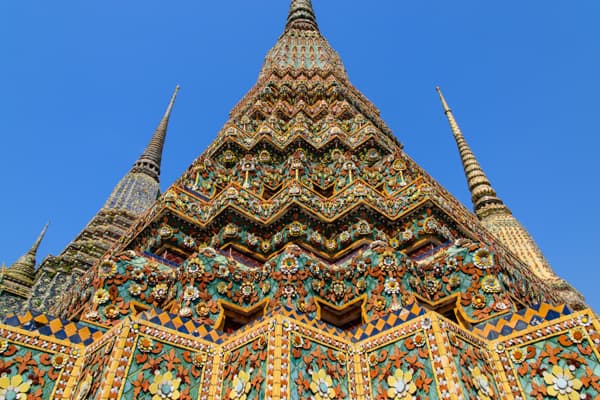
The lack of an anti-aliasing filter allowed the camera to capture the more intricate details in these prangs.
As it turned out, it did pretty well. When charged with keeping focus on motorcyclists from a moving tuk-tuk, for example, the 3D Tracking system did well to adhere to them as they approached, and examining my images later showed an excellent hit rate. I’ll admit the conditions were favourable, with little around the subject that would be likely to distract the camera, but it was good to know of the system’s capabilities for the rest of the trip.
When using this in conjunction with burst shooting, however, the somewhat limited buffer meant that I could only manage around six Raw and JPEG frames before the buffer slowed, even with a decent memory card in place. On a handful of occasions, the fact that I had the camera set to record 14bit Raw files from something I’d been shooting previously also meant that I could achieve neither the fastest burst rate nor this burst depth, although I would typically only find this out when trying to capture a more spontaneous moment.
You can, however, roughly double this burst depth by only recording Raw files, and naturally many more when set to record JPEGs on their own, and the camera does at least clear away this handful of files relatively quickly to the memory card. Still, I imagine this would rule out the D5500 as a backup body for many photographers using more advanced DX-format DSLRs specifically for action.
The Nikon D5300’s LCD screen is bright and detailed, and it remains visible when used outdoors on sunnier days. There were a handful of occasions where I felt the need to boost its brightness, although you can do this with confidence here on account of the stronger-than-usual battery. Its 3.2in dimensions are also a fairly generous for an upper-entry-level camera, while the fact that it can be folded towards the body means that it can easily be protected against scratches.
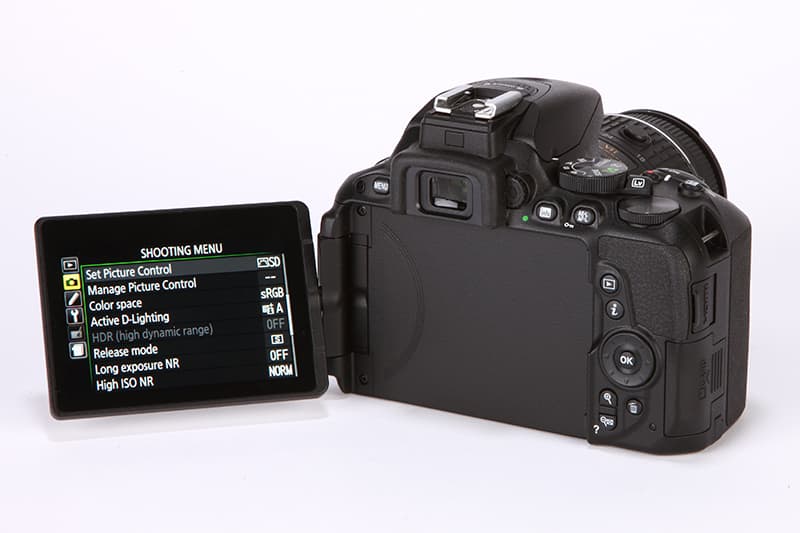
The combination of its vari-angle design and touch sensitivity meant that it could often lend itself to some of the more atypical shooting situations I encountered in unfamiliar locations, and the way the touchscreen interface has been implemented is particularly good. On a number of other touchscreen-equipped cameras, I’ve found many of the virtual controls to be small and cramped, and so often frustrating to use. This is unfortunate but the reason seems clear: this functionality has simply been incorporated into existing interfaces, ones that were not developed with touch operation in mind.
On the D5500, however, Nikon has clearly sought to make things easier. For example, when pressing the ‘i’ button to bring up the Information Display with commonly accessed shooting options, the selection on offer makes excellent use of space by filling the entire width of the screen, without any gaps in between options. Elsewhere, options tend to be isolated for easy access rather than bunched together; as a result, you can select what you want without pressing a neighbouring option by mistake. The fact that the rear display is a little larger than most also helps here.
One issue I did find was that, while the screen’s responsiveness was great when adjusting shooting options and setting the focusing point, I found it too easy to have something brush up against it when using live view, which would have the effect of moving the focusing point to that position (often be the corner). Fortunately, if you just want to use the touchscreen for reviewing images and videos, or disable it altogether, you can do so.
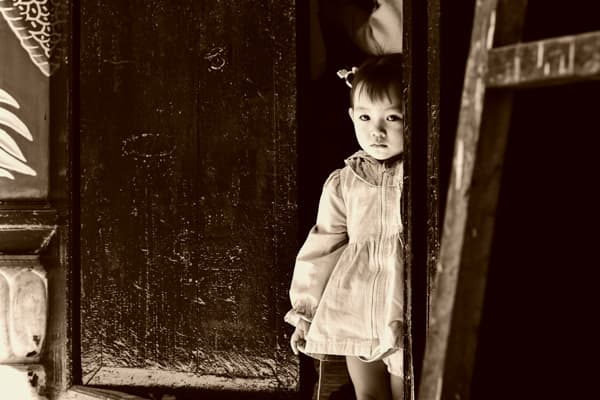
Taken during a visit to a temple in Hoi An, this image was captured using the sepia Picture Control I created in camera.
While the camera’s live view system is perfectly usable, autofocusing speeds here are also still significantly slower than what you’d expect from recent generations of compact system cameras, which is something to consider if your preference is to compose images with the rear display. In less-than-optimum shooting conditions there’s just a little too much back-and-forth hesitation for it to be relied upon for any subjects that could move at any moment. Still, when the light is good, the ability to trigger autofocus and exposure in one action is often very useful.
Nikon D5500: Processing possibilities
Although I had picked out and processed most of the images I deemed to be keepers while I was away, I was interested to see whether some of the images captured in more problematic conditions could be rescued with more careful processing once I returned.
Some of these were captured in the caves of the Marble Mountains, in Da Nang, Vietnam, where I attempted to photograph streams of sunlight filtering through openings in the rocks. Forced to use high sensitivities, I knew getting a successful result of a scene with such a wide dynamic range would be a big ask. The blocked shadows and blown highlights weren’t encouraging me, but I figured it was still worth trying to get it as good as I could.
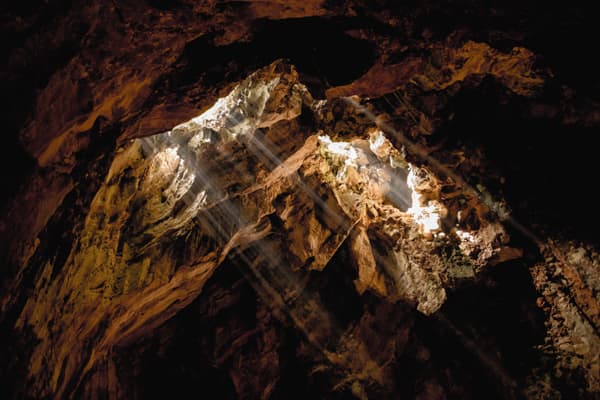
I was happy to use the camera to around ISO 3200 for most images. This was gently processed to bring out shadow details in the rocks.
Back at home, a few adjustments to shadows showed a great deal of detail to be lurking here, revealing intricacies in the rocks and ultimately allowing for a result the was closer to how it appeared to the eye. After a few further adjustments to highlights, contrast and noise, I felt pleased to have persevered in that cave for as long as I did.
Such adjustments made me appreciate the 24.2MP sensor’s capabilities. Aside from the highest few settings I didn’t find noise to be an issue, and where it did appear this could be successfully dealt with in post-production. The lack of the anti-aliasing filter is evident in images too, giving images at lower sensitivities an extra crispness but also leaving high ISO images with greater integrity. After some gentle processing to remove chroma noise, I found many high-ISO images to be left with a texture not dissimilar from a fine-grained film, one that perfectly suited the everyday street scenes I photographed.
Nikon D5500: Verdict
Would I recommend the Nikon D5500? For some people, absolutely. It’s a brilliant example of a camera that’s approachable enough for novice users while being capable enough to satisfy the needs of a more demanding audience. Furthermore, its small size, light weight, sound Wi-Fi system and excellent battery life make it ideal for anyone intending to use it for holidays or travelling.
It would also be a great upgrade choice for those with older Nikon bodies, so long as they understand that the 24MP sensor is likely to tax their lenses in a way that older cameras may not have done. At the time of writing it’s still possible to find the D5500 brand new, although its D5600 update is slowly elbowing it out of the marketplace. The current price difference between the two makes the D5500 appear as a bargain, particularly as the D5600’s improvements don’t really add up to a significantly more powerful model.
Despite its deep grip, it’s perhaps not the best choice for those with larger hands, and while it certainly can be used for action photography, there are more capable options around. These include a number of capable mirrorless options that retail for around the same price, with faster burst rates, high-quality electronic viewfinders and 4K video recording as major draws over a more traditional option like the D5500.
Still, there’s much more to like than there are marks against it. With the benefit of having owned the previous two models in the series, I can appreciate just how Nikon has gently honed the D5000-series formula to arrive at this model. Some of these adjustments are small in themselves but they collectively add up to create a camera with a great deal of thought and consideration behind it. Like many cameras it’s not perfect, but it offers a far more commendable performance than its asking price and upper-entry-level billing may suggest.


